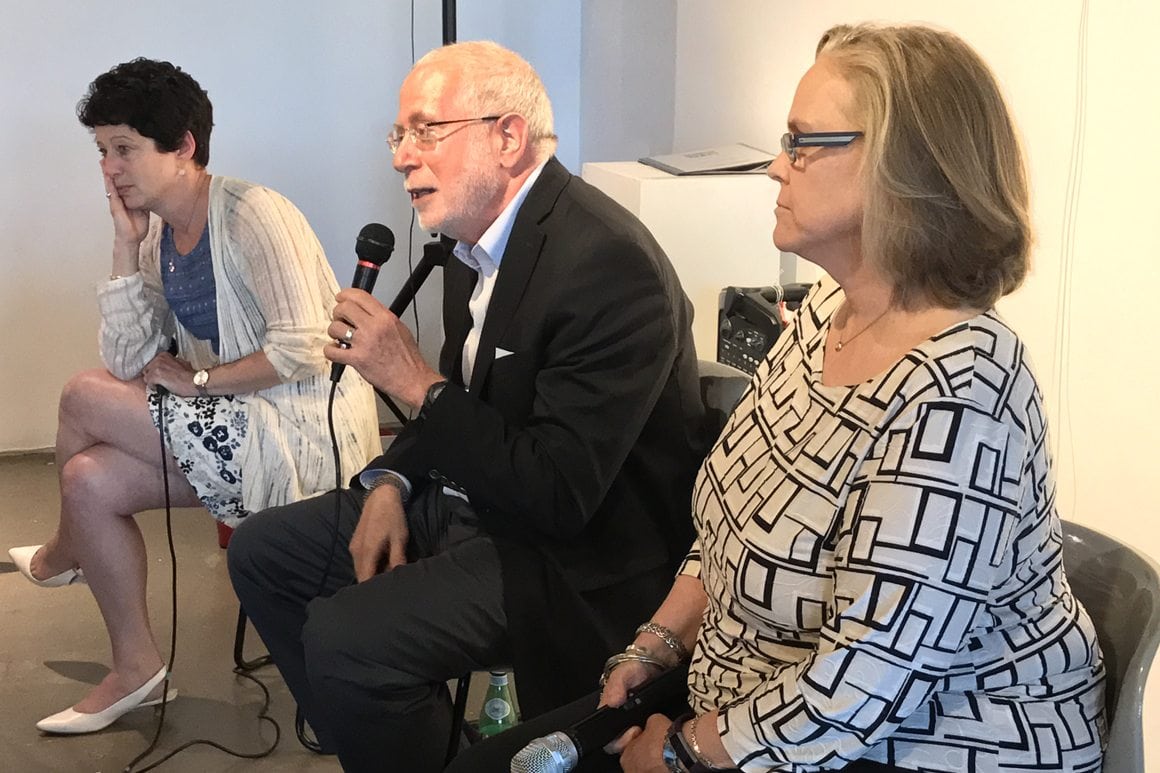The Netflix original series “13 Reasons Why,” based on a young-adult novel of the same name, has captured the attention of adolescents and adults alike since its release on March 31. Many have criticized the series for glamorizing suicide and risking an increase in copycat suicides.
But is there anything the series gets right?
The Hartford HealthCare Behavioral Health Network hosted the latest event in the National Dialogue on Mental Health series on June 12 at Real Art Ways in Hartford. The evening featured a screening of an episode of “13 Reasons Why” and a town hall-style community forum led by experts from the Institute of Living.
According to Dr. Hank Schwartz, IOL psychiatrist-in-chief and vice president of behavioral health at Hartford HealthCare, the series shows a dramatic example of suicide: the revenge fantasy suicide. Adolescents and troubled young adults are particularly vulnerable to this type of suicide because they think there is gratification in controlling the living after death and in leaving behind people tormented by the knowledge that they may have played a role.
“The episode we chose to show isn’t so much about why Hannah kills herself, but about the power of suicide to inflict pain on the people around us,” Schwartz said. “However, I think one of the strengths of ‘13 Reasons Why’ is trying to balance our understanding of Hannah and how she arrived at her decision with the horrendous damage that Hannah has caused by committing suicide.
“The depiction is brutal, graphic and almost unwatchable, and we’re all concerned that kids may emulate it. But that depiction of the horror of what you can do to others is so powerful that I hope it actually has a deterrent effect.”
While some clinicians have reported a spike in suicide attempts since the release of “13 Reasons Why,” Dr. Lisa Namerow, child and adolescent psychiatrist at the IOL and Connecticut Children’s Medical Center, has seen that deterrent effect among some of her patients.
“After watching the show, I started asking questions about the themes of the show,” Namerow said. “Several adolescents told me they struggle with very similar things as Hannah: bullying, peer rejection, and that no one is listening to them. But those children also told me the series has shown them that suicide is not an option.”
Dr. Laura Saunders, child and adolescent psychologist at IOL, highlighted the benefits of using “13 Reasons Why” as a conversation starter between children and the adults in their lives.
“We live in a world where a show like this is literally two clicks away,” Saunders said. “We don’t always know what our kids have access to, but we do have control over creating a dialogue. We need to create a non-judgmental space to allow that conversation to happen, without throwing criticism and without trying to fix it. Listening is hard, but that’s what they need — and that’s one of the important things ‘13 Reasons Why’ shows us.”
The Hartford HealthCare Behavioral Health Network will continue hosting town hall discussions about ’13 Reasons Why’ throughout the year. Starting in the fall, these conversations will be held in partnership with local school districts to help students and parents around the state discuss what’s wrong – and right – with the series.
“It’s not just OK, it’s important to be talking about these things with our kids,” Schwartz said, “and it’s important to be doing it in more than a superficial way.”
Suicidal thoughts are a life-threatening health condition. If someone you know is thinking of taking their life, take it seriously and assume you are the only person who will reach out to them. Here are a few things you can do to help, according to the American Foundation for Suicide Prevention:
1. Talk to them in private
2. Listen to their story
3. Tell them you care about them
4. Ask if they are thinking about suicide
5. Encourage them to seek treatment or to contact their doctor or therapist
For more information, visit the Foundation’s website at afsp.org.


